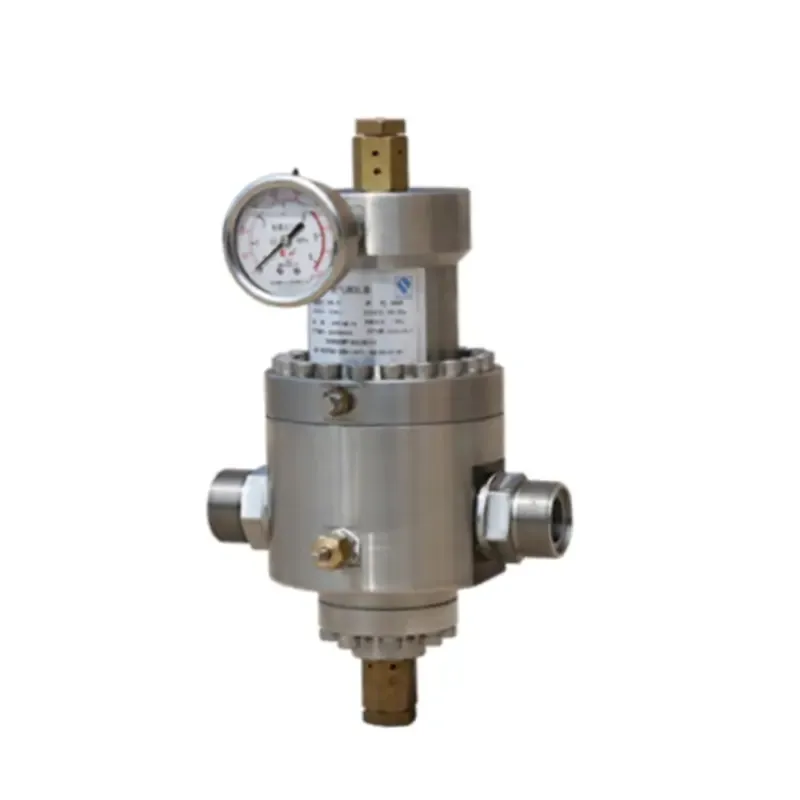
Dec . 23, 2024 21:21
Back to list
صمام تنفيس الأمان
The Importance of Safety Relief Valves A Comprehensive Overview
Safety Relief Valves (SRVs) are critical components in various industrial applications. They are designed to protect pressurized systems and equipment from catastrophic failures due to overpressure conditions. In this article, we will explore what safety relief valves are, their working principles, applications, and the importance of regular maintenance to ensure their reliability.
What is a Safety Relief Valve?
A safety relief valve is a pressure relief device that automatically opens to relieve pressure when it exceeds a predetermined limit. These valves are typically used in applications involving gases and liquids, providing a crucial safety mechanism to prevent explosions and equipment damage. They can be classified into two main types safety valves, which are used for gases, and relief valves, which are typically used for liquids.
Working Principles
Safety relief valves operate based on the balance between the system pressure and a spring-loaded or weight-loaded force that keeps the valve closed. When the system pressure exceeds the set point, the force exerted by the internal pressure overcomes the spring or weight force, causing the valve to open. This allows excess pressure to escape, thereby protecting the equipment and maintaining the system within safe operational limits.
.
Applications
صمام تنفيس الأمان

SRVs are used in a wide range of industries, including oil and gas, chemical processing, power generation, and water treatment. In the oil and gas industry, for instance, safety relief valves are essential in rigs and refineries to handle high-pressure conditions safely. In chemical plants, they prevent the buildup of dangerous pressures that could lead to explosions. Similarly, in power generation facilities, they protect boilers and turbines from excessive pressure.
Moreover, safety relief valves are also found in household appliances such as water heaters, ensuring consumer safety by preventing overheating and pressure buildup.
Importance of Regular Maintenance
Regular maintenance of safety relief valves is vital for their optimal performance and reliability. Over time, factors such as corrosion, build-up of debris, and mechanical wear can impair the function of these valves. Regularly scheduled inspections help identify these issues before they lead to system failures.
Maintenance procedures typically include cleaning, testing the valve's set pressure, and replacing worn or damaged components. Marking the frequency of these inspections is often regulated by industry standards, which may vary by application and locality, but a common guideline suggests inspecting SRVs annually.
In addition to routine maintenance, operators should be trained to recognize audible and visual cues that indicate valve malfunctions. For instance, if a valve frequently opens when system pressure has not exceeded the set limit, it may be indicative of a problem that requires immediate attention.
Conclusion
Safety relief valves are indispensable in safeguarding industrial systems from overpressure conditions. Their automatic function provides an added layer of protection, making them critical in a wide array of applications from chemical processing to energy generation. Regular maintenance is essential to ensure that these valves operate correctly, thereby preserving both equipment integrity and personnel safety. As industries continue to evolve and face new challenges, investing in quality SRVs and maintaining them diligently will remain a fundamental aspect of operational safety and risk management.
Latest news
-
Safety Valve Spring-Loaded Design Overpressure ProtectionNewsJul.25,2025
-
Precision Voltage Regulator AC5 Accuracy Grade PerformanceNewsJul.25,2025
-
Natural Gas Pressure Regulating Skid Industrial Pipeline ApplicationsNewsJul.25,2025
-
Natural Gas Filter Stainless Steel Mesh Element DesignNewsJul.25,2025
-
Gas Pressure Regulator Valve Direct-Acting Spring-Loaded DesignNewsJul.25,2025
-
Decompression Equipment Multi-Stage Heat Exchange System DesignNewsJul.25,2025

